Cipolletti is a town of 87K inhabitants in South Argentina, in northern Patagonia. It's famous for its orchards (which are called chacras here), mostly apples and pears, which grow and flourish on the green edge of the river Rio Negro. Lately, it has attracted the attention of wine lovers for some remarkable wine projects, especially Bodega Noemia, owned by Danish Hans Vinding-Diers, and Bodega Chacra, of Italian Piero Incisa della Rocchetta on which we reported here.
Since around ten years ago, the cheese of Mauricio Couly has also turned Cipolletti into a fine culinary destination. The cheese produced at his quesería Ventimiglia, a dairy farm where 50 Jersey cows, 80 goats and some 50 sheep live happily, makes the average national production soar. The latter, for some unknown reason, languishes despite the quantity and quality of the milk produced here (we should remember that in this country there's more cattle than inhabitants and that extensive farming, thanks to the spaces available in this country, is still dominant) which should in fact favour cheese production. The cheese made by Mauricio has nothing to do with the mediocre national production. It is something completely different, cheese with Dutch, French, Swiss, Italian accents: it's by travelling to these countries that Couly trained over the years, working as an apprentice, learning the recipes of the great classics and then returning home to perfect them, adapt them, give them a new take.
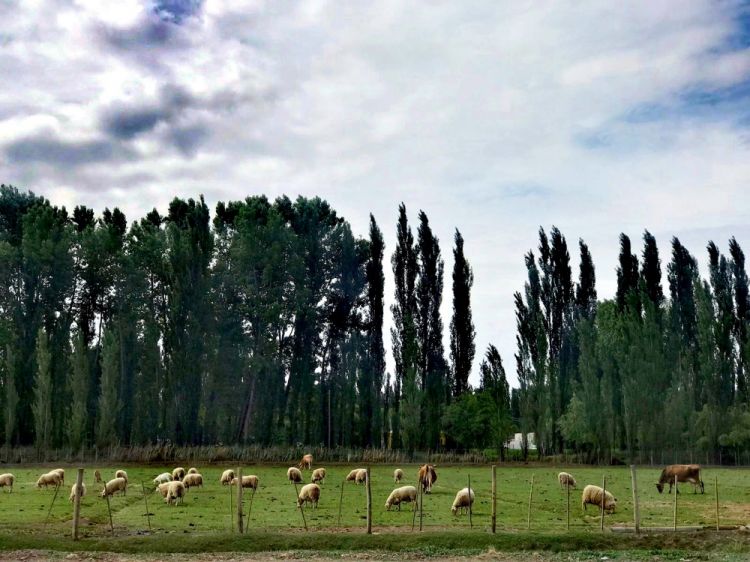
It all began with the restaurant that the
Couly brothers (
Mauricio,
Edgard and
Dario) opened in Cipolletti almost 20 years ago (March 2004) and which is still the best in the area: Ristorante
La Toscana. It would be a mistake to imagine they have Tuscan origins, however. He's not Tuscan, and nor are his parents, or grandparents. And the cuisine isn't Tuscan either. Apparently, twenty-years ago Tuscan cuisine was popular, a popularity that left its mark on the name of the restaurant (a name which,
Mauricio will forgive us, probably will have any marketing manager sceptical, no matter where in the world).
Couly's origins are not Tuscan, but Italian and French: his parents come from Occitan, in the South of France, from the city of Aveyron; the surname of his mother, though, used to name the quesería - Ventimiglia – comes from the province of Potenza, from Cersosimo.
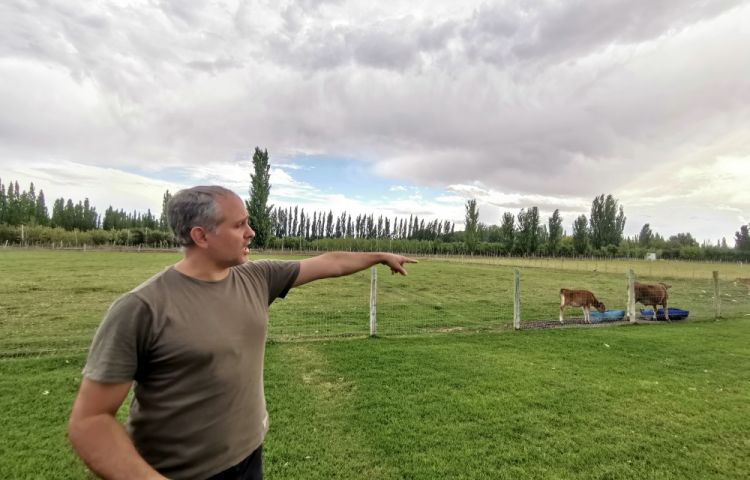
For the production of his cheese Mauricio only uses milk produced by his animals, 50 Jersey cows, 80 goats and around 50 sheep
In 2009
Mauricio bought a farm and started experimenting. His idea was to make mozzarella for his restaurant: «It's the easiest and quickest cheese to make: you prepare the curd, string it, cut it, and the next day you have fresh cheese ready for consumption». He had only a few animals and a small production. Over the years, with the experiments, the fine tuning, the educational trips, the increasing number of animals and hence of available milk, he started to make blue cheese and then matured cheese.
Quesería Ventimiglia now processes 4-5K litres of milk per week, and makes around 20 different kinds of cheese, fresh (like caprino, feta, ricotta, mozzarella), semi-mature, blumy rind, mature and four types of blue cheese (in Spanish:
quesos azules), inspired by as many classics:
Sangre Azul (blue blood), inspired by French Roquefort;
Tres Leches (three milks: cow, sheep and goat), inspired by Spanish Cabrales;
Blu Couly, inspired by English Stilton; and finally a fantastic blue cheese inspired by Italian classics, in a version half-way between sweet and spicy.
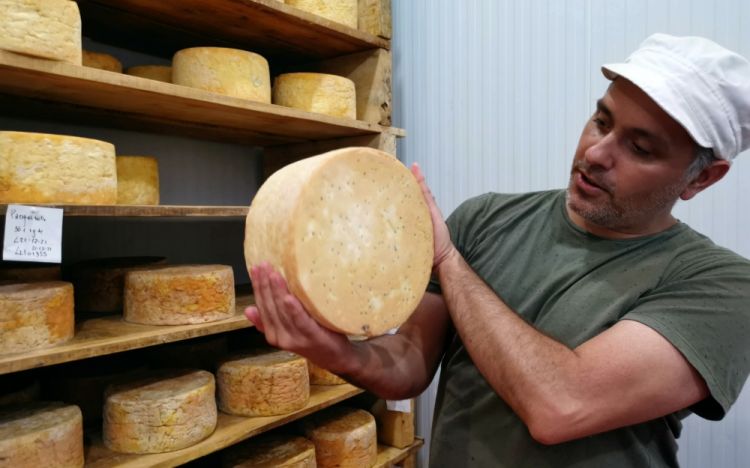
At the beginning of the ageing, the blue cheese is perforated with special metal needles which leave a channel for the air, thus favouring the development of the mould
uses the word "inspiration" on purpose, and gives a new name to his cheese: «When you make artisanal cheese, it cannot be identical because first of all we're in a different hemisphere, and in a different continent: the breed, the bacteria in the milk, the type of pasture, the wind, the temperature and the humidity are all different. We can talk of
terroir for cheese too» he told us. «It would be very difficult to make identical copies and in a way it would show lack of respect: we're talking of great cheese classics, cheese with a history and an ancient tradition, tied to a specific place. They act as an inspiration, but it wouldn't be right to use the same name» (here we imagine the marketing managers of the entire world cheering).
And if you brought, for instance, the same dairy producer and the same cattle to Argentina,
Mauricio told us, to try to make the same cheese with the same recipe, the result would be different. It would change not only the type of pasture, and hence the feed, but many other elements that influence the resulting product.
And so to pay tribute, using it as inspiration, to the famous Italian blue cheese,
Mauricio thought of adding a local touch. How so? For instance in the choice of milk. In the case of the blue cheese, we have 70% jersey cow milk, and 30% sheep's milk. This choice adds a different set of bacteria to the milk, as well as a different percentage and quality of fat, lactose, salt, proteins, which have an inevitable impact on the resulting product. «I wanted to add a percentage of sheep's milk to our take on this recipe, to give it an
impronta patagonica -
Mauricio explained – these landscapes and places are strongly connected with the presence of
cordero patagonico (lamb) and sheep». The result is a cheese with the typical blue and green marbling, intense and creamy, with a flavour and texture that recall our spicy version.
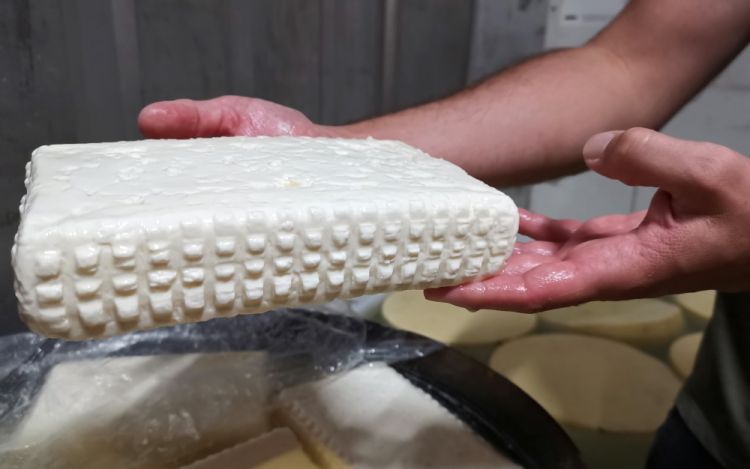
Feta cheese made by Mauricio, from sheep and goat's milk, refined in barrique barrels filled with 70% brine for at least 60 days
I
Mauricio's first cheese maker was
Pablo Battro (famous Argentinian cheese maker, author of books and producer of cheese under the brand
Estancia La Suerte). Then, over the years, and with lots of passion and curiosity, he made experiments, travelled to Europe, and during this time
Couly visited cheese factories and labs in Switzerland, France, Italy, the Netherlands, Sweden, Denmark, working as an apprentice and learning new recipes and techniques, which he then brought back home and refined at length until he found his take, «perfecting a recipe requires years of attempts and work» he told us.
He still plans to travel at length in Italy (firstly: to the area of the Po Valley where the most famous Italian blue cheese was invented). He remembers he visited two small farms near Rome. A guy called
Daniele taught him how to make buffalo milk mozzarella (an excellent recipe he makes at
La Toscana) and then there was a “grandad”, in the middle of the Roman countryside, who raised his sheep and made ricotta and pecorino romano. «In the morning, he would make fresh ricotta for breakfast, with a little sugar and cold coffee, delicious, a Roman version of tiramisu –
Mauricio tells us - explaining how he was charmed by the importance your people give to food and by the hospitality and culture that are part of this».
He visits Italy, and more in general Europe, every year since 2015 (with the obvious exception of the pandemic), when he first participated in the
Gusto Festival in Zurich. A yearly event created and organised by chef
Boris Walker who, after working for years in the restaurant of
Bodega Familia Schroeder in Neuquén, where he met Mauricio, returned to Switzerland with the idea of organising a festival dedicated to the cuisine of Patagonia.
Mauricio works there for around two weeks each year, and then spends two more weeks travelling and training in Europe. This year, we will see him at Gusto Festival early in October, when he will participate with his cheese.
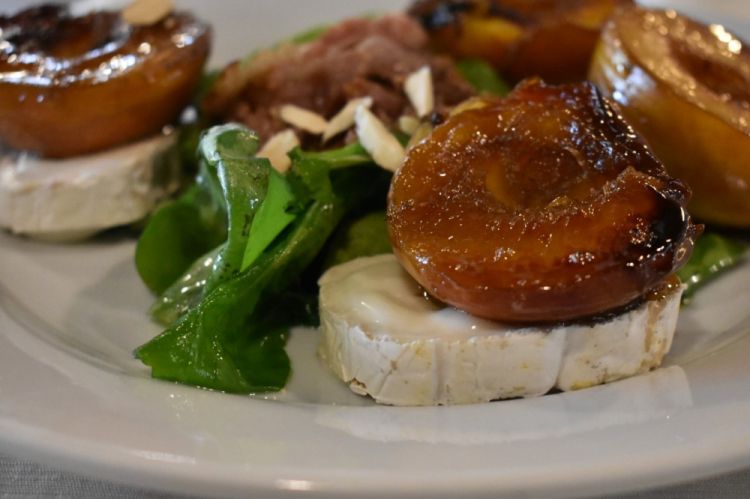
Gascony and caramelised peaches
The virtuous management of the farm, in which
Mauricio's animals grow happily, deserve a special mention: free range goats, sheep, cows, cattle fed with the milk of their mothers, and animals that live a very dignified life that lasts around 15 years. He calls them by their name – and talks with melancholy of his first cow, Lourdes, with whom it all began – and treats them with respect and gratitude, making sure they have a very dignified life. The statement is our own, and we understand its limits, but seeing how they work at
Queserìa Ventimiglia, we feel that Mauricio's products, on top of being spectacular, are also suitable for vegans.
Translated into English by Slawka G. Scarso